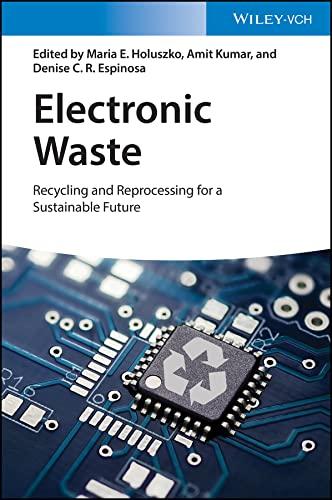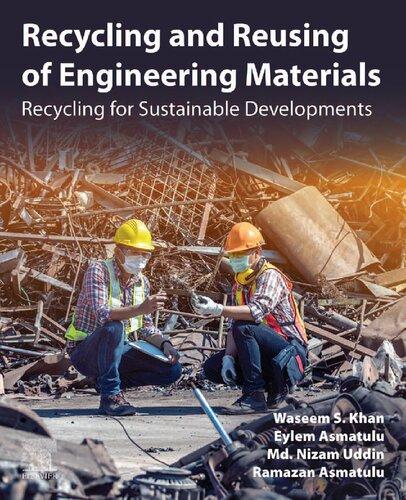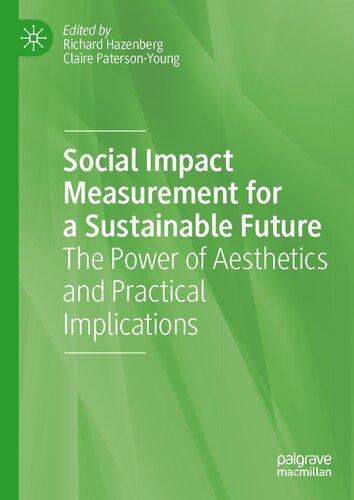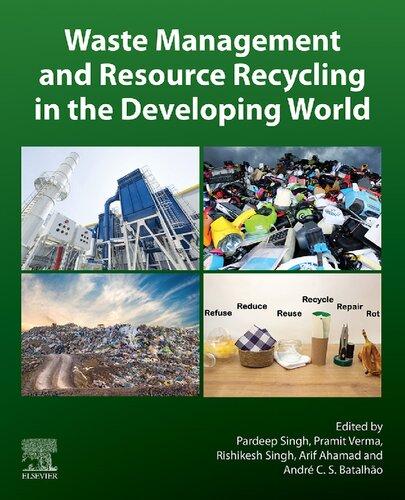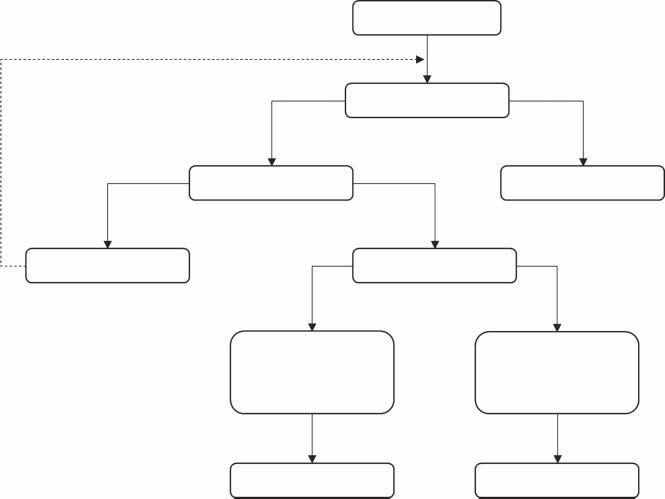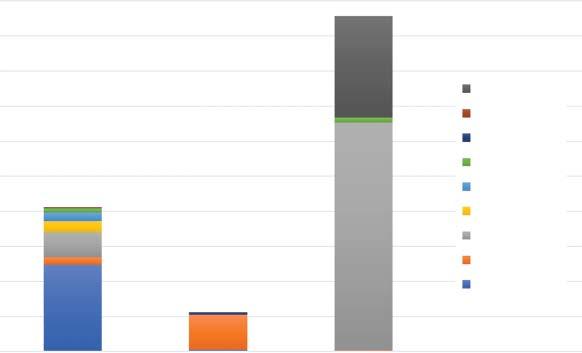ElectronicWaste
RecyclingandReprocessingforaSustainableFuture
Editedby MariaE.Holuszko
AmitKumar
DeniseC.R.Espinosa
Editors
Dr.MariaE.Holuszko
TheUniversityofBritishColumbia NBKInstitueofMiningEngineering 517-6350StoresRoad V6T1Z4Vancouver,BC Canada
Dr.AmitKumar
TheUniversityofBritishColumbia NBKInstitueofMiningEngineering 517-6350StoresRoad V6T1Z4Vancouver,BC Canada
Dr.DeniseC.R.Espinosa UniversityofSaoPaulo PolytechnicSchool,Departmentof ChemicalEngineering Av.Prof.LucianoGualberto 380–Butantã,SãoPaulo,SP05508-010 Brazil
CoverDesign: Wiley
CoverImage: ©AndreiKuzmik/ Shutterstock,Recylingsymbol–public domain
Allbookspublishedby WILEY-VCH arecarefully produced.Nevertheless,authors,editors,and publisherdonotwarranttheinformation containedinthesebooks,includingthisbook, tobefreeoferrors.Readersareadvisedtokeep inmindthatstatements,data,illustrations, proceduraldetailsorotheritemsmay inadvertentlybeinaccurate.
LibraryofCongressCardNo.: appliedfor BritishLibraryCataloguing-in-PublicationData Acataloguerecordforthisbookisavailable fromtheBritishLibrary.
Bibliographicinformationpublishedbythe DeutscheNationalbibliothek TheDeutscheNationalbibliothekliststhis publicationintheDeutscheNationalbibliografie;detailedbibliographicdataareavailable ontheInternetat <http://dnb.d-nb.de>
©2022WILEY-VCHGmbH,Boschstr.12, 69469Weinheim,Germany
Allrightsreserved(includingthoseof translationintootherlanguages).Nopartof thisbookmaybereproducedinanyform–by photoprinting,microfilm,oranyothermeans–nortransmittedortranslatedintoamachine languagewithoutwrittenpermissionfromthe publishers.Registerednames,trademarks,etc. usedinthisbook,evenwhennotspecifically markedassuch,arenottobeconsidered unprotectedbylaw.
PrintISBN: 978-3-527-34490-1
ePDFISBN: 978-3-527-81642-2
ePubISBN: 978-3-527-81640-8
oBookISBN: 978-3-527-81639-2
Typesetting Straive,Chennai,India PrintingandBinding
Printedonacid-freepaper 10987654321
Contents
Preface xiii
1Introduction,Vision,andOpportunities 1 MariaE.Holuszko,DeniseC.R.Espinosa,TatianaScarazzato,andAmit Kumar
1.1Background 1
1.2E-Waste 2
1.3Outline 8 References 9
2e-WasteManagementandPracticesinDevelopedand DevelopingCountries 15 PabloDias,AndréaM.Bernardes,andNazmulHuda
2.1Introduction 15
2.2OverviewonWEEEManagementandPractices 16
2.3InternationalWEEEManagementandTransboundaryMovement 18
2.4WEEEManagementandPractices–DevelopedandDeveloping Countries 19
2.5DevelopedCountries 21
2.5.1Switzerland 21
2.5.2Japan 22
2.5.3Australia 22
2.6DevelopingCountries 23
2.6.1Brazil 23
2.6.2India 23
2.6.3SouthAfrica 24
2.6.4Nigeria 25
2.6.5Taiwan 25
2.7Conclusions 26 References 26
3e-WasteTransboundaryMovementRegulationsinVarious Jurisdictions 33
PabloDias,MdTasbirulIslam,BinLu,NazmulHuda,and AndréaM.Bernarde
3.1Background 33
3.2InternationalLegislationandTransboundaryMovement 34
3.3ExtendedProducerResponsibility(EPR) 41
3.4RegulationsinVariousJurisdictions 41
3.4.1Europe 43
3.4.1.1France 43
3.4.1.2Germany 43
3.4.1.3Switzerland 44
3.4.1.4Norway 44
3.4.2Americas 45
3.4.2.1UnitedStatesofAmerica 45
3.4.2.2Canada 46
3.4.2.3Brazil 47
3.4.3Asia 47
3.4.3.1Japan 47
3.4.3.2China 48
3.4.3.3Taiwan 49
3.4.3.4India 49
3.4.4Africa 49
3.4.4.1SouthAfrica 49
3.4.4.2Nigeria 50
3.4.5Australia 50
3.5Conclusions 51 References 52
4ApproachforEstimatinge-WasteGeneration 61 AmitKumar
4.1Background 61
4.2EconometricAnalysis 61
4.3ConsumptionandUse/Leaching/Approximation1Method 62
4.4TheSales/Approximation2Method 63
4.5MarketSupplyMethod 63
4.5.1SimpleDelay 63
4.5.2DistributionDelayMethod 63
4.5.3CarnegieMellonMethod/MassBalanceMethod 64
4.6Time-StepMethod 64
4.7SummaryofEstimationMethods 65
4.8LifespanofElectronicProducts 65
4.9Globale-WasteEstimation 66 References 69
5MaterialsUsedinElectronicEquipmentandManufacturing Perspectives 73 DanielD.München,PabloDias,andHugoM.Veit
5.1Introduction 73
5.2LargeHouseholdAppliances(LHA) 75
5.3SmallHouseholdAppliance(SHA) 76
5.4ITandTelecommunicationsEquipment 78
5.4.1ComputersandNotebooks 78
5.4.2MonitorsandScreens 79
5.4.3MobilePhones(MP) 81
5.4.4PrintedCircuitBoards(PCB) 83
5.5Photovoltaic(PV)Panels 85
5.6LightingEquipment 86
5.7Toys,Leisure,andSport 86
5.8FutureTrendsinWEEE–Manufacturing,Design,andDemand 89 References 91
6RecyclingTechnologies–PhysicalSeparation 95 AmitKumar,MariaE.Holuszko,andShuleiSong
6.1Introduction 95
6.2Dismantling 96
6.3Comminution/SizeReduction 97
6.3.1Shredders 97
6.3.2HammerMills 98
6.3.3High-VoltageFragmentation 98
6.3.4KnifeMills 100
6.3.5Cryogrinding 100
6.4ParticleSizeAnalysis 100
6.5SizeSeparation/Classification 102
6.5.1Screening 102
6.5.2Classification 104
6.5.2.1CentrifugalClassifier 104
6.5.2.2GravitationalClassifiers 105
6.6MagneticSeparation 106
6.6.1Low-IntensityMagneticSeparators 106
6.6.2High-IntensityMagneticSeparators 107
6.7ElectricalSeparation 108
6.7.1CoronaElectrostaticSeparation 108
6.7.2TriboelectricSeparation 109
6.7.3EddyCurrentSeparation 110
6.8GravitySeparation 111
6.8.1Jigs 112
6.8.2Spirals 112
6.8.3ShakingTables 113
6.8.4Zig-ZagClassifiers 114
6.8.5CentrifugalConcentrators 114
6.8.6DenseMediumSeparation(DMBath/Cyclone) 115
6.9FrothFlotation 116
6.10Sensor-BasedSorting 119
6.11ExampleFlowsheets 119 References 123
7PyrometallurgicalProcessesforRecyclingWasteElectricaland ElectronicEquipment 135 Jean-PhilippeHarvey,MohamedKhalil,andJamalChaouki
7.1Introduction 135
7.2PrintedCircuitBoards 136
7.3PyrometallurgicalProcesses 137
7.3.1Smelting 138
7.3.1.1Copper-SmeltingProcesses–SulfideRoute 138
7.3.1.2Copper-SmeltingProcesses–SecondarySmelters 142
7.3.1.3Lead-SmeltingProcesses 142
7.3.1.4AdvantagesandLimitationsofSmeltingProcesses 146
7.3.2ElectrochemicalProcesses 147
7.3.2.1High-TemperatureElectrolysis 148
7.3.2.2Low-TemperatureElectrolysis 149
7.3.3OtherPyrometallurgicalOperationsUsedinElectronicWaste Recycling 152
7.3.3.1Roasting 152
7.3.3.2MoltenSaltOxidationTreatment 152
7.3.3.3Distillation 153
7.3.3.4Pyrolysis 155 References 157
8RecyclingTechnologies–Hydrometallurgy 165
DeniseC.R.Espinosa,RafaelP.deOliveira,andThamirisA.G.Martins
8.1Background 165
8.2WastePrintedCircuitBoards(WPCBs) 167
8.3PhotovoltaicModules(PV) 172
8.4Batteries 176
8.5Light-EmittingDiodes(LEDs) 178
8.6Trends 180 References 181
9RecyclingTechnologies–Biohydrometallurgy 189
FranziskaL.LedererandKatrinPollmann
9.1Introduction 189
9.2Bioleaching:MetalWinningwithMicrobes 189
9.3Biosorption:SelectiveMetalRecoveryfromWasteWaters 191
9.3.1BiosorptionViaMetalSelectivePeptides 194
9.3.2ChelatorsDerivedfromNature 196
9.4Bioflotation:SeparationofParticleswithBiologicalMeans 197
9.5BioreductionandBioaccumulation:NanomaterialsfromWaste 199
9.6Conclusion 201 References 202
10ProcessingofNonmetalFractionfromPrintedCircuitBoards andReutilization 213
AmitKumarandMariaE.Holuszko
10.1Background 213
10.2NonmetalFractionComposition 214
10.3BenefitsofNMFRecycling 215
10.3.1EconomicBenefits 215
10.3.2EnvironmentalProtectionandPublicHealth 216
10.4RecyclingofNMF 218
10.4.1PhysicalRecycling 218
10.4.1.1SizeClassification 219
10.4.1.2GravitySeparation 219
10.4.1.3MagneticSeparation 220
10.4.1.4ElectricalSeparation 220
10.4.1.5FrothFlotation 220
10.4.2ChemicalRecycling 221
10.5PotentialUsage 221 References 223
11LifeCycleAssessmentofe-Waste–WasteCellphone Recycling 231
PengweiHe,HaiboFeng,GyanChhipi-Shrestha,KasunHewage,and RehanSadiq
11.1Introduction 231
11.2Background 232
11.2.1TheoryofLifeCycleAssessment 232
11.3LCAStudiesonWEEE 234
11.3.1ApplicationsonWEEEManagementStrategy 234
11.3.2ApplicationsonWEEEManagementSystem 235
11.3.3ApplicationsonHazardousPotentialofWEEEManagementand Recycling 236
11.4CaseStudy 236
11.4.1GoalandScopeDefinition 237
11.4.1.1FunctionalUnit 237
11.4.1.2SystemBoundary 238
11.4.2LifeCycleInventory 238
11.4.2.1FormalCollection 239
11.4.2.2InformalCollection 239
11.4.2.3MechanicalDismantling 239
x Contents
11.4.2.4PlasticRecycling 240
11.4.2.5ScreenGlassRecycling 240
11.4.2.6BatteryDisposal 240
11.4.2.7ElectronicRefiningforMaterials 241
11.4.3LifeCycleImpactAssessment 241
11.4.4Results 241
11.4.4.1FeaturePhoneFormalCollectionScenario 241
11.4.4.2FeaturePhoneInformalCollectionScenario 243
11.4.4.3SmartphoneFormalCollectionScenario 244
11.4.4.4SmartphoneInformalCollectionScenario 246
11.4.5Discussion 247
11.5Conclusion 249 References 250
12BiodegradabilityandCompostabilityAspectsofOrganic ElectronicMaterialsandDevices 255 AbdelazizGouda,ManuelReali,AlexandreMasson,AlexandraZvezdin, NiaByway,DenisRho,andClaraSantato
12.1Introduction 255
12.1.1TechnologicalInnovationandWaste 255
12.1.2Eco-friendliness 257
12.1.3OrganicElectronics 257
12.1.4OpportunitiesforGreenOrganicElectronics 258
12.2StateoftheArtinBiodegradableElectronics 258
12.3OrganicField-EffectTransistors(OFETs) 260
12.3.1Fundamentals 260
12.3.2Anthraquinone,Benzoquinone,andAcenequinone 262
12.3.3Quinacridones 262
12.4ElectrochemicalEnergyStorage 264
12.4.1Quinones 264
12.4.2Dopamine 265
12.4.3Melanins 265
12.4.4Tannins 268
12.4.5Lignin 269
12.5BiodegradationinNaturalandIndustrialEcosystems 269
12.5.1DegradationandBiodegradation 270
12.5.2CompostingProcess 271
12.5.3MaterialsHalf-LifeUnderCompostingConditions 274
12.5.4BiodegradationintheEnvironment 275
12.6MicrobiomeinNaturalandIndustrialEcosystems 276
12.6.1TheRuminant–HayNaturalEcosystem 279
12.6.2TheTermite–WoodNaturalEcosystem 280
12.6.3TheIndustrialComposter–BiowasteEcosystem 281
12.6.3.1MunicipalCompostingFacility 281
12.6.3.2EngineeredCompostingFacility 282
12.6.4SpecializedInoculantAdaptedtoOrganicMatter 282
12.6.5SpecializedInoculantAdaptedtoHeavyMetals 283
12.7ConcludingRemarksandPerspectives 284 Acknowledgment 285 References 285
13CircularEconomyinElectronicsandtheFutureof e-Waste 299 NaniPajunenandMariaE.Holuszko
13.1Introduction 299
13.2DigitalizationandtheNeedforElectronicDevices 301
13.3RecyclingandCircularEconomy 302
13.4Challengesfore-WasteRecyclingandCircularEconomy 304
13.5DriversforChange–CircularEconomy 306
13.6DemandforRecyclableProducts 309
13.7Summary 310 References 312
Index 315
Preface
Digitalizationhasplayedanessentialroleinsocialandtechnologicaldevelopment globally,whileelectronicandelectricalequipmenthasbecomeintegraltooureverydaylives.Digitaldevicesprovidebroadaccesstoeducation,instantinformation, continuousentertainmentandcontributetomasscommunication,thusimproving theoverallqualityofourlives.DuringtheCOVID-19pandemic,theinternetallowed ustofunctionandremainaproductivesocietyworldwide.
Meanwhile,thelifeexpectancyofmostelectronicdevices,specificallysmall devicessuchascellphones,tablets,andlaptops,isgettingshorterandshorter, resultinginalarmingamountsofe-wastegeneration.Manydiscardedelectronics arebeingimproperlydisposedof,henceposingasignificantrisktotheenvironment andhumanhealth.Withanestimatedannualgrowthof3–4%,electronicwaste isthefastestgrowingwastestreamworldwide,exceeding50Mtannuallyin2019, whileonly20%ofthee-wasteiscollectedandrecycledglobally.Theelectronic deviceshavebeenreportedtocontaingoldandcoppergrades,significantlyexceedingthegradesofmanyoperatingmines.Theexistenceofpreciousmetalsine-waste providesaneconomicincentiveforrecycling.Ontheotherhand,thepresenceof hazardoussubstancesine-wastecallsforcomplexreprocessingtodecontaminate beforeitsfinaldisposal.
Thedevelopmentofefficiente-wasterecyclingmethodsandtherecoveryof preciousmetalsandcriticalmaterialsfrome-wasteareinterestingandtechnically challenging.Furthermore,theinformalurbanminingofe-wastecreatessignificant socialandpublichealthissues.Therefore,therewasaneedforacomprehensive overviewofthecurrentsituationwithe-wastegeneration,disposal,regulations, recyclingtechnologieswhileprovidingaglobalperspective.
Thisbookaimstooverviewthecurrentglobalsituationregardinge-waste, includingtechnologicalissueswithe-wasterecyclingandrecoveryofvaluefrom e-wastestreams.Thechaptersinthisbookoutlinethedefinitionofelectronic waste,exploremethodsfore-wasteestimation,identifychallengesrelatedtothe timelyinformationone-wastecollectionandmanagement,andelaborateonthe practicesindevelopedanddevelopingcountries.Thebookdeliversinformationon currentlyusedrecyclingtechnologies,includingphysicalseparationtechnologies, pyrometallurgy,hydrometallurgy,andbiohydrometallurgy,andreviewsmaterials usedinthemanufacturingofelectronicsaswellasthedevelopmentofnew
xiv Preface
materialsforgreen-ecologicalandbiodegradableelectronics.Additionally,methods andideasfornewpracticestofacilitatesustainabilityintheelectronicsindustryare proposedto“closetheloop”inindustrialproductiontominimizewastegeneration andpossiblytopromoteazero-wastescenario.Thebookconcludeswithachapter onthecirculareconomyinelectronicsandprovidessomeperspectiveonthefuture ofelectronicwaste.
Thisbookwasmadepossiblethroughcollaborationbetweeninternationalexperts inthefieldofe-wasterecycling.Itcollatesacademicandindustrialexpertiseto provideacomprehensiveoverviewofthescopeoftheproblemwithelectronics worldwide,specificallyontheirfatease-wasteandtherecyclingeffortstoshed lightonthecurrente-wasteparadigm.
Vancouver,July2021
MariaE.Holuszko
AmitKumar
DeniseC.R.Espinosa
Introduction,Vision,andOpportunities
MariaE.Holuszko 1 ,DeniseC.R.Espinosa 2 ,TatianaScarazzato 3 ,and AmitKumar 1
1 NBKInstituteofMiningEngineering,UniversityofBritishColumbia,6350,StoresRoad,Vancouver,BCV6T 1Z4,Canada
2 UniversityofSãoPaulo,PolytechnicSchool,DepartmentofChemicalEngineering,Av.Prof.Luciano Gualberto,380–Butantã,SãoPaulo–SP05508-010,Brazil
3 FederalUniversityofRioGrandedoSul,DepartmentofMaterials,9500,Av.BentoGonçalves,Porto Alegre–RS,91509-900,Brazil
1.1Background
TheconceptofsustainabilitydefinedbyTheUnitedNationsOrganizationin1987, whichisvalideventoday,isbasedontheideaof“meetingtheneedsofthepresent withoutcompromisingtheabilityoffuturegenerationstomeettheirownneeds” (Nations2019).SuchaconceptwascomplementedinTheJohannesburgDeclarationonSustainableDevelopmentinwhichthethreepillarsofsustainabilitywere defined:economic,environmental,andsocialdevelopment(Comission2002).
Notwithstanding,theworldcurrentlyfacesatransitionbetweenthethirdandthe fourthindustrialrevolutions,whichbeganaboutfivedecadesagoandhastransformedourwayofliving.AlsoknownastheInformationRevolution,thisperiod hasbeenmarkedbyswiftadvancesincomputertechnologies,massivepopularizationofhigh-technologydevices,andthegrowthofartificialintelligence(Carvalho etal.2018;RaiandLal2000).Thetechnologicalrevolutionbroughtupthecreation oflithium-ionbatteries,touchscreendevices,supercomputers,photovoltaicpanels, andnanocomposites,andpracticallyrevolutionizedthewaythesocietyinteracts, thewayenergyisstored,andtheadvancedmaterialsfieldforallindustrialsectors.
Electricalandelectronicequipmentisoneofthemajorconsumersofmetalssuch ascopper,gold,silver,andiron.Namias(2013)suggestedthatelectronicdevicescan containupto60differentelementsthatcouldbevaluableorhazardous.Natural ResourcesCanada(2019)showedthatglobally18%ofaluminum,31%ofcopper, 9.5%ofgold,9%ofplatinumgroupmetals,and24%ofrare-earthelementswere usedinelectricalandelectronicequipmentmanufacturingin2017.IntheUnited StatesofAmerica,9%oftotalaluminum,21%ofberyllium,19%ofcopper,40%
ElectronicWaste:RecyclingandReprocessingforaSustainableFuture, FirstEdition. EditedbyMariaE.Holuszko,AmitKumar,andDeniseC.R.Espinosa. ©2022WILEY-VCHGmbH.Published2022byWILEY-VCHGmbH.
1Introduction,Vision,andOpportunities
ofgold,and26%ofsilverwereusedintheelectricalandelectronicequipment manufacturingindustryin2019(U.S.GeologicalSurvey2019).BullionStreet (2012)showedthatapproximately290tonnesofgoldand6800tonnesofsilver areconsumedbytheelectronicindustryeveryyear.Inthecurrentscenario,the newmanufacturingindustrybecamedependentonless-knownrawmaterialsand increasedtheextractionofcommonmetalsfromoressimultaneously.Indium,for example,despitebeingdiscoveredin1863,wasfoundtobeindustriallyapplicable onlyin1934.Theuseofindiuminthin-filmcoatings,mainlyasindium-tin-oxide compound(ITO)inliquidcrystaldisplayscreens,increaseditsworldconsumption over1000%since1993(AlfantaziandMoskalyk2003).
Rare-earthelements(REEs)arealsowidelyusedindigitaltechnologiessuchas discdriversandcommunicationsystemsbutalsoinbatteriesandfuelcellsforhydrogenstorage,catalysts,light-emittingdiodes(LEDs),andfluorescentlighting.Backin 1950,theapplicationsofREEinmagnetsofelectricandelectronicequipmentwere alreadyknown.Nevertheless,until2010theirrecyclingratewaslowerthan1%due totheirrelativelylowprices(Gunn2013).Between2010and2015,thedemandfor REEsurpasseditssupplyandcontinuouslyincreased.Astheproductionisalmost totallyheldbyfewcountries,therecyclingofREEhasbecomeaparamountconcern (Edahbietal.2019).
1.2E-Waste
Withthedevelopmentofnewtechnologies,especiallyinlaptops,cellphones,and tablets,oldertechnologiesaregettingobsolete,reducingthelifespanofelectrical andelectronicsproductsandthuscontributingtoahigherrateofwastegeneration. Asaresult,closeto1billiondeviceswillbediscardedwithin4–5years.Thediscarded electricandelectronicequipmentortheirpartsareconsiderede-waste.TheEuropeanCommissionDirective2008/98/EC(2008)andtheEuropeanUnionDirective 2012/19/EU(2012)describede-wasteas:
anyelectricalorelectronicequipmentwhichiswaste(substanceorobject whichtheholderdiscardsorintendsorisrequiredtodiscard),includingall components,sub-assemblies,andconsumableswhicharepartoftheproduct atthetimeofdiscarding.
Basedonthedefinitionofe-waste,theelectricalorelectronicequipment(EEE) itselfwasdividedintosix(6)classesintheDirective2012/19/EU(TheEuropean Union2012).Thesecategorieswiththeitems(notlimitedto)inthecategoriesare listedas,
1)Temperature-exchangeequipment:refrigerators,freezers,airconditioning equipmentand,heatpumps
2)Screens,monitors,andequipmentcontainingscreens(surface > 100cm2 ): screens,televisions,LCDphotoframes,monitors,laptops,andnotebooks
3)Lamps:fluorescentlamps,high-intensitydischargelamps,includinghighpressuresodiumlampsandmetalhalidelamps,low-pressuresodiumlampsand LEDlamps
4)Largeequipment(externaldimensions > 50cm):washingmachines,dryers,dishwashers,electricstoves,musicalequipment,largecomputermainframes,large printingmachines,copyingequipment,largecoin-slotmachines,largemedical devices,largeautomaticdispensers,andphotovoltaicpanels
5)Smallequipment(externaldimensions < 50cm):vacuumcleaners,appliances forsewing,luminaires,microwaves,irons,toasters,electrickettles,clocksand watches,electricshavers,scales,radio,videocameras,electricalandelectronic toys,sportsequipment,smokedetectors,heatingregulators,thermostats,small electricalandelectronictools,smallmedicaldevices,andsmallautomatic dispensers
6)SmallITandtelecommunicationequipment(externaldimension < 50cm): mobilephones,GPS,pocketcalculators,routers,personalcomputers,printers, andtelephones
Thiselectronicwaste(discardedelectronics)hasbeenagrowingconcernaround theworld.Thetotale-wastegeneratedaroundtheglobein2019was53.6million tonnesandisexpectedtoreach74milliontonnesin2030.Thewastegeneratedper capitaincreasedfrom6.1kgperinhabitantin2016to7.3kgperinhabitantin2019 (Fortietal.2020).Wahlen(2019)reportedthatunderthebusiness-as-usualcase,the totale-wastegenerationwouldincreaseto120milliontonnesby2050.Thegrowth rateofe-wastegenerationhasbeenreportedtobe3–5%byCucchiellaetal.(2015), 3–4%byBaldéetal.(2017)andAaron(2019),andashighas8%byLeBlanc(2018). AccordingtoTransparencyMarketResearchreport(2017),theglobale-wastemarketisanticipatedtoincreaseatacompoundannualgrowthrateof5.6%byvolume from2016to2026.
Thefateofthee-wastecanbedescribedbythesimplifieddiagramshown inFigure1.1.Theprimaryfocusofanycountryororganizationshouldbethe collectionandrecyclingofe-waste.However,notallthee-wasteiscollected,anda portionofthee-wastestreamisdisposedofinlandfills.Thecollectedmaterialsare sentforrecycling,andthehigh-valuecomponentssuchasmetalsandhigh-value plasticsarefedbacktothemanufacturingstream,whereaslow-valuematerialsare disposedofinlandfills.
Theprimaryfocusofanycountryororganizationshouldbethecollectionand recyclingofe-waste.However,notallthee-wasteiscollected,andaportionofthe e-wastestreamisdisposedofinlandfills.Thecollectedmaterialsaresentforrecycling,andthehigh-valuecomponentssuchasmetalsandhigh-valueplasticsarefed backtothemanufacturingstream,whereaslow-valuematerialsaredisposedofin landfills.Thee-wastecollectionvolumemustbeincreasedtoboostthecirculareconomyinanypartoftheworld,andthewastestreamaftertherecyclingprocesshasto bestudiedsimultaneouslyforitspotentialrecoveryandusagesothatthefractions tobedisposedofareminimized.
E-wasterecyclingdecreasestheamountofextractedrawmaterialsfromoresand solidwasteinadequatedisposal.Therecyclingroutesmustalsobetechnicallyand
End of life
End of life EEE sales
E-waste generation
E-waste collection
E-waste reuse
Recycled stream (metals + high value plastics)
E-waste recycling
Reuse
SimplifiedflowofEEEproducts.
amountEstimated value
E-waste disposal
Disposal Waste stream (non-metal + low value materials)
Figure1.2 Estimatedvalueofmaterialspresentine-waste.
economicallyfeasible.Giventheaddedvalueofpreciousmetalsandcriticalmetals foundinthemajorityofe-waste,suchrequirementsarenotdifficulttobefulfilled. Baldéetal.(2017)estimatedtheamountofvariouselementsandmaterialspresent ine-waste.Itshowedthatthetotalcontained/potentialvalueofselectedmetaland materialspresentine-wastewasUS$57billionin2019(Fortietal.2020).Figure1.2 showsabreakdownofthevariousmetalsandmaterialspresentine-wastewith theirtotalamountandestimatedvalues.Itshouldbenotedthattheestimatedvalue
Figure1.1
depictedinFigure1.2representsanideal-casescenarioof100%collectionandmetal recoveryandwithoutaccountingforcostsassociatedwithcollectionandrecycling. Itindicatestheeconomicopportunityfore-wasterecycling.
Itshouldalsobetakenintoconsiderationthattheconcentrationofmetalsinthe e-wasteissignificantlyhigherthanthatofaconventionalminingoperation.The globaloregradehasbeendecreasing,andtheincreasedglobalmetaldemandhas forcedminingoperationstoincreasetheplantthroughputandexcavatemorecomplexandfine-grainedoredeposits(LèbreandCorder2015).
Table1.1showstheconcentrationofvariousmetalsindifferenttypesofe-waste andanaverageorebody.Calvoetal.(2016)summarizedthattheglobalaveragecoppergradeforrun-of-mineoreis ∼0.62%andwilldeclineinthecomingyearsdueto theexhaustionofhigh-grademines.AMEResearch(2018)showedthattheaverage coppergradehasdecreasedfrom0.74%in2005to0.59%in2017,withacompound annualdeclinerateof1.8%.Theglobalaveragegoldgradeofallthedepositswas 1.01g/tin2013(Desjardins2014).Thehighestgoldgradefortheundergroundoperationwas21.5ppminFosterville,Australia,whereasforopenpitwas7.60ppmin WayLinggo,Indonesia(Basov2018).Theaverageoutputoftop-sixsilvermineswas 7.6oz(215g)pertonnein2012andhasdroppedto4–5ozpertonin2017(McLeod 2014;MoneyMetalsExchange2018).ThepalladiumgradereportedinTable1.1is basedontheaveragepalladiumgradeoftheLacdesIlesMinePropertyinNorthern Ontario.Itindicatesthattheaveragemetalgradepresentine-wasteissignificantly higherthanconventionalminesandthusprovidestheopportunityfortheextraction/urbanmining.
Table1.1 AveragemetalcontentinvariouswasteEEEandtypicalore.
CopperAluminumIronGoldSilverPalladium %%%ppmppmppm
Airconditioner6–197–9461558–Desktop7–202–418–4746–240207–57018–25
Laptop1–191–22032–630190–110019
Mobilephone10–333530–15002000–3800300–1700 Printedcircuitboard12–192–80–1129–1120100–520033–220 Refrigerator3–171–248–504442–Television1–211–1513–435–300120–6000–20 Washingmachine3–70–352–531751–e-Waste(average)12–351.5–55–1130–35080–100030–200 Typicalore0.5–320–2430–600.5–105–101–10
Sources:BasedonBizzoetal.(2014),Calvoetal.(2016),Desjardins(2014),I¸sıldar(2016),Bizzo etal.(2014),Calvoetal.(2016),Desjardins(2014),Fornalczyketal.(2013),I¸sıldar(2016),Khaliq etal.(2014),Liu(2014),McLeod(2014),Namias(2013),NorthAmericanPalladiumLtd.(2018), Shahetal.(2014),Tickneretal.(2016),Zengetal.(2016).
Figure1.3 AveragepercentweightofsomecommonmetalsfoundinPCB,photovoltaic modules,andHDmagnets(Caldasetal.2015;Diasetal.2016,2018;Kasperetal.2011; Münchenetal.2018;MünchenandVeit2017;Petteretal.2014;Rozasetal.2017;Sant’ana etal.2013;Silvasetal.2015;Stuhlpfarreretal.2015;Yamaneetal.2011).Sources:Based onCaldasetal.(2015),Diasetal.(2016),andKasperetal.(2011).
AsdepictedinFigure1.3,photovoltaicmodulespresentahighpercentweightofa singleelement(aluminum),whileprintedcircuitboardsarecomposedofamixture ofdifferentmetals,mainlycopper,iron,aluminum,tin,zinc,andnickel.Itisestimatedthatprintedcircuitboards(PCBs)maycontainanaverageof18elementsfrom theperiodictable(Caldasetal.2015;Kasperetal.2011;Petteretal.2014;Rozas etal.2017;Sant’anaetal.2013;Silvasetal.2015;Yamaneetal.2011).Remarkably, harddiskmagnets,althoughtheymaycontainhighamountsofiron,alsopresent excitingamountsofrare-earthelements,mainlyneodymium,praseodymium,and dysprosium(MünchenandVeit2017).
Metalsthatarepresentinsmalleramountsmayalsobeeconomicallyadvantageoustoberecovered.Goldandsilverincellphones,forexample,representabout 0.06%and0.045%inweight,respectively(Caldasetal.2015;Sant’anaetal.2013). Consideringthenumberofcellphonesworldwide(Kreyenhagen2018),itcanbe estimatedthatalmost300-tongoldispresentonlyincellphonedevices.
Theaddedvalueofsuchmetalssupportstheirrecyclingeveniftheyarepresentin lowpercentweight.Photovoltaicmodules,forexample,althoughpresentlessthan 1%ofsilverintheircomposition(Figure1.3),maybeeconomicallyfeasibletobe recycled,asshowninFigure1.4.
FromFigure1.4,itbecomesevidentthattheestablishmentoffeasiblerecycling routesmaybeadvantageousforreclaimingmetalsineitherhighorlowamounts. Thisisundoubtedlychallenging,ase-wastefromdistinctoriginswouldpresent differentcompositionsandstructures.Inamicroscopicvision,metalsandother elementsmaybebondedwitheachotherinmanypossibilities,whichmayrequire differenttechniquestoachievetheirextractionandrecovery.Thus,recycling
*Prices in US$/kg from London Exchange Metals on December/19
Figure1.4 (a)Compositionofphotovoltaicmodulesillustratedaskilogramsofeachmetal perkilogramofphotovoltaicmodule.(b)Valueofeachmetalperkilogramofphotovoltaic modules.
routesmustbeversatile.Electricandelectronicequipmentareconstantlybeing improved,andtheirchemicalcompositionmaychangeboththerequiredprocess andtheobtainedmaterials.Lithium-ionbatteries(LIBs)areagoodexampleof continuousimprovement.CathodesfromLIBsaretypicallycomposedoflithium, cobalt,manganese,andnickeloxides(Blomgren2017;Zhaoetal.2019).Because cobaltisconsideredacriticalmetal,novelcathodematerialsarebeingdeveloped, suchassulfur-basedcathodes,whicheliminatetheneedforcobalt(Lietal.2018). High-efficiencyanodesarealsobeingdevelopedtoincreasetheperformanceof LIBs,suchastitanium-niobiumbasedanodesforautomotiveapplications(Takami etal.2018).Consideringthespeedoftechnologicalevolution,inafewdecadesfrom now,thecompositionofobsoletelithium-ionbatteriesmaypresentasubstantial change.
Recyclingprocessingroutesaretypicallyhydrometallurgical,pyrometallurgical, orhydro-pyrometallurgical.Eachofthempresentsbothadvantagesanddisadvantages,andallofthemmayproducetoxictailings,whichmustbeconsidered.The pyrometallurgicalrecyclingroutesconsistofseveralprocessesthat,amongothers, includesmelting,combustion,pyrolysis,moltensaltprocessing,andpyro-chemical techniques.Asfordrawbackstothepyrolysisprocess,thereisusuallythereleaseof toxicgasesandhalogenformationarisingfromfireretardantsandplasticmixtures thatcomposethewasteelectricalorelectronicequipment(WEEE)scrap.Forthe efficientrecoveryofmetals,somemodernmethods,suchasvacuumpyrolysis,the moltensaltprocess,andpyro-chemistry,appeartobepromisingcandidatesbecause oftheirinnovativesolutionsforenvironmentalissuesandrecoveryefficiency.Nevertheless,theystillneedmorescientificandtechnicalcontributionscoupledwith industrialvalidation(Zhangetal.2015).
Hydrometallurgicalprocessinginvolvesasequenceofmethodsforproducing metalsandmetalcompoundsfromaqueousmedia.Ingeneral,theprocessis composedofleachingtechniques,followedbypurificationandrecoveryofmetals, resultinginthedesiredproduct.Suchaproductmaybeeithermetalsoralloys
(b) Metal prices* per kilogram of photovoltaic modules
(a) Average weight composition of photovoltaic modules (according to Figure 1)
andcompoundscontainingthemetalsofinterest,suchasoxides(Gupta2003). Precipitation,hydrolysis,electrochemistry,conversion,complexation,solvation, andionicdissociationareoftenusedindifferentprocessingsteps.However,such routesoftenrequiretheuseofaggressiveandconcentratedreactantsforleaching steps.Thetreatmentofthegeneratedwastebelongstothedevelopmentofa hydrometallurgicalroute.Inaddition,someprocessesstillpresentlowefficiency.To solvesuchissues,thescientificcommunityiscurrentlyfocusingonthedevelopment ofless-toxicprocessingroutes,using,forexample,ionicliquids,supercriticalfluids, andorganicacids,aimingatachievingoptimumextractionrateusinggreener chemicals.
Nevertheless,anotherimportantmatteristheefficientcollectionofthedisposedof WEEEtogettorecyclingindustries.Theincitementofreversallogisticsandcircular economyconceptsmustbeimprovedandoptimizedtoachievesatisfactoryratesof recycledWEEE.Inthissense,theestablishmentofstrictlegislationandefficient managementareaswellimportant.Indevelopingcountries,forexample,WEEE recyclingisstillincipient,thereislittlelegislation,andincentivesarelow.Evenin developedcountries,thereisstillmuchtobeimproved.
Theselegislationsandprogramsareessentialtoincreaseawarenessandboost thecollectionrate.Thee-wastemanagementprogramsalsoprovidecollectiontargets,summarize,andreportthecollectionvolumes,whichhelpstounderstandthe performanceandprovidebetterplanningtoolsforthefuture.Anefficiente-waste managementprogramcouldincreasethecollectionrates,provideabetterestimationofe-wastecollection,andwouldalsoprovideabetterunderstandingofthesteps requiredtoimprovee-wastecollectionandrecyclingandthuspromotecirculareconomy.Atthesametime,ahighercollectionrateintandemwithanefficientrecycling systemthatnotonlyrecoversmetalsbutalsoprovidesasolutionforthenonmetals wouldbenecessarytoincreasethee-wastecircularity.
Therefore,itbecomesevidentthate-wasterecyclingisaninterdisciplinaryand multidisciplinarytheme,asdepictedinFigure1.5.Technical,economic,legislative,social,andenvironmentalaspectsareinvolvedthroughoutthelifecycleof all-electricandelectronicequipment,includingrecyclingaftertheirdisposal.This bookseekstoprovideanoverviewofallaspectsofasustainablefuture.
1.3Outline
Tofullyunderstandthee-waste,thisbookpresentsvarioussectionstodescribedifferentaspectsofe-waste,e-wastemanagementsystemsandinvolvedtechnologies, andotherrelateddisciplines.
Chapter2presentsanoverviewofe-wastemanagementpracticesadopted indevelopedanddevelopingcountries.Thedifferencesintheavailabilityof regulationsinacountrydirectlyimpactthefateofe-wasteinthatcountry.
InChapter3,theregulationsrelatedtothetransboundarymovementofe-waste aroundtheworldarediscussed.Theimportandexportofe-wasteisanothermajor challengeinthee-wastemanagementsystem.
Figure1.5 Multidisciplinaryaspectsofe-wasterecycling.
Variousmodelsandmethodsusedforthequantificationoftotale-wasteglobally arepresentedinChapter4.Thesuccessofane-wasterecyclingordisposalfacility dependsontheannualthroughputtoplant.
Chapter5emphasizesthematerialsusedinthemanufacturingofelectronic devices.Thedeterminationoftypeandquantityofthematerialsusedinthe manufacturingprocessdefinethetechnologiesadaptedforrecycling.
Adetailedviewofrecyclingtechnologiesusedine-wasteprocessingispresented inChapters6–10.
Chapter11presentsinsightsintothelifecycleanalysisofobsoleteelectricand electronicequipment.Thelifecycleanalysisisanessentialtoolforquantifyingthe environmentalimpactofe-waste.
Finally,thefutureofelectronicdevicesande-wasteisdiscussedinChapters12 and13,focusingoninnovativeaspectsofmanufacturingelectronicdevices,green chemistry,andcirculareconomy.
References
Aaron,J.(2019).WhyisE-wastemanagementimportantin2019?https://get-greennow.com/e-waste-management(accessed15March2021).
Alfantazi,A.M.andMoskalyk,R.R.(2003).Processingofindium:areview. Minerals Engineering 16(8):687–694.https://doi.org/10.1016/S0892-6875(03)00168-7.
AMEResearch(2018).Copper–decliningcopperoregrades.https://aus.amegroup .com/Website/FeatureArticleDetail.aspx?faId=437(accessed15March2021).
Baldé,C.P.,Forti,V.,Gray,V.,etal.(2017).TheglobalE-wastemonitor–2017. https://www.itu.int/en/ITU-D/Climate-Change/Documents/GEM2017/Global-EwasteMonitor2017.pdf(accessed15March2021).
Basov,V.(2018).Highest-gradegoldminesin2017.https://www.mining.com/highestgrade-gold-mines-2017(accessed15March2021).
Bizzo,W.,Figueiredo,R.,anddeAndrade,V.(2014).Characterizationofprintedcircuit boardsformetalandenergyrecoveryaftermillingandmechanicalseparation.
Materials 7(6):4555–4566.https://doi.org/10.3390/ma7064555.
Blomgren,G.E.(2017).Thedevelopmentandfutureoflithiumionbatteries. Journalof theElectrochemicalSociety 164(1):A5019–A5025.https://doi.org/10.1149/2 .0251701jes.
BullionStreet(2012).Electronicsindustryuses320tonsofgold,7500tonsofsilver annually.http://www.bullionstreet.com/news/electronics-industry-uses-320-tonsof-gold7500-tons-of-silver-annually/2255(accessed15March2021).
Caldas,M.P.K.,Moraes,V.T.,DeJunca,E.etal.(2015).RecuperaçãoDePrata:Estudo DeUmaRotaHidrometalúrgicarecyclingofprintedcircuitboardsaimingsilver recovery. TecnologiaEmMetalurgia,MateriaiseMineração 12:102–108.
Calvo,G.,Mudd,G.,Valero,A.,andValero,A.(2016).Decreasingoregradesinglobal metallicmining:atheoreticalissueoraglobalreality? Resources 5(4):36.https://doi .org/10.3390/resources5040036.
Carvalho,N.,Chaim,O.,Cazarini,E.,andGerolamo,M.(2018).Manufacturinginthe fourthindustrialrevolution:apositiveprospectinsustainablemanufacturing. ProcediaManufacturing 21:671–678.https://doi.org/10.1016/j.promfg.2018.02.170. Cucchiella,F.,D’Adamo,I.,LennyKoh,S.C.,andRosa,P.(2015).RecyclingofWEEEs: aneconomicassessmentofpresentandfuturee-wastestreams. Renewableand SustainableEnergyReviews 51:263–272.https://doi.org/10.1016/j.rser.2015.06.010. Desjardins,J.(2014).Globalgoldmineanddepositrankings2013.http://www .visualcapitalist.com/global-gold-mine-and-deposit-rankings-2013(accessed15 March2021).
Dias,P.,Javimczik,S.,Benevit,M.etal.(2016).RecyclingWEEE:extractionand concentrationofsilverfromwastecrystallinesiliconphotovoltaicmodules. Waste Management 57:220–225.
Dias,P.,Schmidt,L.,Gomes,L.B.etal.(2018).Recyclingwastecrystallinesilicon photovoltaicmodulesbyelectrostaticseparation. JournalofSustainableMetallurgy 4 (2):176–186.https://doi.org/10.1007/s40831-018-0173-5.
Edahbi,M.,Plante,B.,andBenzaazoua,M.(2019).Environmentalchallengesand identificationoftheknowledgegapsassociatedwithREEminewastesmanagement. JournalofCleanerProduction 212:1232–1241.https://doi.org/10.1016/j.jclepro.2018 .11.228.
Fornalczyk,A.,Willner,J.,Francuz,K.,andCebulski,J.(2013).E-wasteasasourceof valuablemetals. ArchivesofMaterialsScienceandEngineering 63(2):87–92.https:// www.researchgate.net/publication/260706030_E-waste_as_a_source_of_valuable_ metals(accessed15March2021).
Forti,V.,Baldé,C.P.,Kuehr,R.,andBel,G.(2020).GlobalE-wasteMonitor2020: Quantities,flowsandthecirculareconomypotential.https://www.itu.int/en/ITU-D/ Environment/Documents/Toolbox/GEM_2020_def.pdf(accessed15March2021). Gunn,G.(2013). CriticalMetalsHandbook,1–439.Wileyhttps://doi.org/10.1002/ 9781118755341.
Gupta,C.K.(2003). ChemicalMetallurgyPrinciplesandPractice.Wiley. I¸sıldar,A.(2016). BiologicalVersusChemicalLeachingofElectronicWasteforCopper andGoldRecovery.UniversitéParis-EstMarne-la-Valléehttps://tel.archives-ouvertes .fr/tel-01738056/document(accessed15March2021).
Kasper,A.C.,Berselli,G.B.T.,Freitas,B.D.etal.(2011).Printedwiringboardsfor mobilephones:characterizationandrecyclingofcopper. WasteManagement 31(12): 2536–2545.https://doi.org/10.1016/j.wasman.2011.08.013. Khaliq,A.,Rhamdhani,M.,Brooks,G.,andMasood,S.(2014).Metalextraction processesforelectronicwasteandexistingindustrialroutes:areviewandAustralian perspective. Resources 3(1):152–179.https://doi.org/10.3390/resources3010152. Kreyenhagen,J.(2018). WhyCateringtoMobileUsersisVitaforToday’SServices. ForbesCommunicationsCouncil.
LeBlanc,R.(2018).E-wasterecyclingfactsandfigures.https://www.thebalancesmb .com/e-waste-recycling-facts-and-figures-2878189(accessed15March2021). Lèbre,É.andCorder,G.(2015).Integratingindustrialecologythinkingintothe managementofminingwaste. Resources 4(4):765–786.https://doi.org/10.3390/ resources4040765.
Li,G.,Chen,Z.,andLu,J.(2018).Lithium-sulfurbatteriesforcommercialapplications. Chem 4(1):3–7.https://doi.org/10.1016/j.chempr.2017.12.012.
Liu,S.(2014).AnalysisofelectronicwasterecyclingintheUnitedStatesandpotential applicationinChina[ColumbiaUniversity].https://secureservercdn.net/198.71.233 .185/epm.300.myftpupload.com/wp-content/uploads/2020/10/FINAL_Shumeng_ Thesis_Dec-20_2014.pdf.
McLeod,C.(2014).Topprimarysilverminersfacingdecliningoregrades.http:// investingnews.com/daily/resource-investing/precious-metals-investing/silverinvesting/top-primary-silver-miners-facing-declining-ore-grades(accessed15March 2021).
MoneyMetalsExchange.(2018).World’slargestsilvermines:sufferfallingoregrades& risingcosts/seekingalpha.https://seekingalpha.com/article/4141630-worlds-largestsilver-mines-suffer-falling-ore-grades-and-rising-costs(accessed15March2021).
München,D.D.,Bernardes,A.M.,andVeit,H.M.(2018).Evaluationofneodymiumand praseodymiumleachingefficiencyfrompost-consumerNdFeBmagnets. Journalof SustainableMetallurgy 4(2):288–294.https://doi.org/10.1007/s40831-018-0180-6. München,D.D.andVeit,H.M.(2017).Neodymiumasthemainfeatureofpermanent magnetsfromharddiskdrives(HDDs). WasteManagement 61:372–376.https://doi .org/10.1016/j.wasman.2017.01.032.
Namias,J.(2013). TheFutureofElectronicWasteRecyclingintheUnitedStates:Obstacles andDomesticSolutions.NewYork,UnitedStates:ColumbiaUniversity. NaturalResourcesCanada(2019).Mineralsandmetalsfacts.https://www.nrcan.gc.ca/ minerals-metals-facts/20507(accessed15March2021).
NorthAmericanPalladiumLtd.(2018).NorthAmericanPalladiumcompletesanew feasibilitystudyfeaturingamajorexpansionofundergroundreserves.https://www .nap.com/investors/news-releases/news-releases-details/2018/North-AmericanPalladium-Completes-a-New-Feasibility-Study-Featuring-a-Major-Expansion-ofUnderground-Reserves/default.aspx(accessed15March2021).
Petter,P.M.H.,Veit,H.M.,andBernardes,A.M.(2014).Evaluationofgoldandsilver leachingfromprintedcircuitboardofcellphones. WasteManagement 34(2): 475–482.https://doi.org/10.1016/j.wasman.2013.10.032.
Rai,L.P.andLal,K.(2000).Indicatorsoftheinformationrevolution. Technologyin Society 22(2):221–235.https://doi.org/10.1016/S0160-791X(00)00006-3.
Rozas,E.E.,Mendes,M.A.,Nascimento,C.A.O.etal.(2017).Bioleachingofelectronic wasteusingbacteriaisolatedfromthemarinespongeHymeniacidonheliophila (Porifera). JournalofHazardousMaterials 329:120–130.https://doi.org/10.1016/j .jhazmat.2017.01.037.
Sant’ana,H.B.S.,Moura,F.J.,andVeit,H.M.(2013).CaracterizaçãoFísico-QuímicaDe PlacasDeCircuitoImpressoDeAparelhosDeTelefoneCelular. TecnologiaEm MetalurgiaMateriaiseMineração 10(3):231–238.https://doi.org/10.4322/tmm.2013 .033.
Shah,M.B.,Tipre,D.R.,andDave,S.R.(2014).Chemicalandbiologicalprocessesfor multi-metalextractionfromwasteprintedcircuitboardsofcomputersandmobile phones. WasteManagement&Research 32(11):1134–1141.https://doi.org/10.1177/ 0734242X14550021.
Silvas,F.P.C.,JiménezCorrea,M.M.,Caldas,M.P.K.etal.(2015).Printedcircuitboard recycling:physicalprocessingandcopperextractionbyselectiveleaching. Waste Management 46:503–510.https://doi.org/10.1016/J.WASMAN.2015.08.030. Stuhlpfarrer,P.,Luidold,S.,andAntrekowitsch,H.(2015).RecyclingofNd2 Fe14 B magnets. WorldofMetallurgy-ERZMETALL 68(5):278–285.
Takami,N.,Ise,K.,Harada,Y.etal.(2018).High-energy,fast-charging,long-life lithium-ionbatteriesusingTiNb2 O7 anodesforautomotiveapplications. Journalof PowerSources 396(June):429–436.https://doi.org/10.1016/j.jpowsour.2018.06.059. TheEuropeanCommission(2008).Directive2008/98/ECoftheEuropeanParliament andofthecouncilof19November2008onwasteandrepealingcertaindirectives. OfficialJournaloftheEuropeanUnion L312:3–30.https://eur-lex.europa.eu/legalcontent/EN/TXT/PDF/?uri=CELEX:32008L0098&from=EN(accessed15March 2021).
TheEuropeanUnion(2012).Directive2012/19/EUoftheEuropeanParliamentandof theCouncilofthe4July2012onwasteelectricalandelectronicequipment(WEEE). OfficialJournaloftheEuropeanUnion L(June)https://eur-lex.europa.eu/legalcontent/EN/TXT/PDF/?uri=CELEX:32012L0019&from=EN(accessed15March 2021).
Tickner,J.,Rajarao,R.,Lovric,B.etal.(2016).Measurementofgoldandothermetalsin electronicandautomotivewasteusinggammaactivationanalysis. Journalof SustainableMetallurgy 2(4):296–303.https://doi.org/10.1007/s40831-016-0051-y.
TransparencyMarketResearch.(2017).E-scrapandprintedcircuitboard(PCB)E-scrap market.https://www.transparencymarketresearch.com/e-scrap-printed-circuitboard-e-scrap-market.html(accessed15March2021).
U.S.GeologicalSurvey(2019). MineralCommoditySummaries.U.S.GeologicalSurvey https://doi.org/10.3133/70202434.
UNDepartmentofEconomicandSocialAffairs(2002).TheJohannesburgDeclaration onSustainableDevelopment.https://www.un.org/esa/sustdev/documents/WSSD_ POI_PD/English/POI_PD.htm(accessed10January2021).
UNESCO(2019). SustainableDevelopment.https://en.unesco.org/themes/educationsustainable-development/what-is-esd/sd#:~:text=Sustainable%20development%20is %20the%20overarching,to%20meet%20their%20own%20needs.%E2%80%9D (accessed10January2021).
Wahlen,C.B.(2019).UNreporthighlightsenvironmental,healthrisksfromE-waste, urgescirculareconomyshift.https://sdg.iisd.org/news/un-report-highlightsenvironmental-health-risks-from-e-waste-urges-circular-economy-shift(accessed15 March2021).
Yamane,L.H.,Moraes,V.T.,DeCrocce,D.etal.(2011).RecyclingofWEEE: characterizationofspentprintedcircuitboardsfrommobilephonesand computers. WasteManagement 31(12):2553–2558.https://doi.org/10.1016/j.wasman .2011.07.006.
Zeng,X.,Gong,R.,Chen,W.-Q.,andLi,J.(2016).Uncoveringtherecyclingpotentialof “new”WEEEinChina. EnvironmentalScience&Technology 50(3):1347–1358. https://doi.org/10.1021/acs.est.5b05446.
Zhang,S.,Ding,Y.,Liu,B.etal.(2015).Challengesinlegislation,recyclingsystemand technicalsystemofwasteelectricalandelectronicequipmentinChina. Waste Management 45:361–373.https://doi.org/10.1016/j.wasman.2015.05.015.
Zhao,T.,Ji,R.,Yang,H.etal.(2019).Distinctiveelectrochemicalperformanceofnovel Fe-basedLi-richcathodematerialpreparedbymoltensaltmethodforlithium-ion batteries. JournalofEnergyChemistry 33:37–45.https://doi.org/10.1016/j.jechem .2018.08.005.
e-WasteManagementandPracticesinDeveloped andDevelopingCountries*
PabloDias 1,2 ,AndréaM.Bernardes 2 ,andNazmulHuda 3
1 UniversityofNewSouthWales,SchoolofPhotovoltaicandRenewableEnergyEngineering,Facultyof ScienceandEngineering,229AnzacParade,Kensington,Sydney,NSW2052,Australia
2 FederalUniversityofRioGrandedoSul,EngineeringSchool,DepartmentofMaterials,Av.BentoGonçalves, 9500,PortoAlegre–RS91509-900,Brazil
3 MacquarieUniversity,SchoolofEngineering,FacultyofScienceandEngineering,BalaclavaRd,NorthRyde, NSW2109,Australia
2.1Introduction
Wasteelectricalandelectronicequipment(WEEEore-waste)isclassifiedasa solidwastewithinthehazardouswastecategory(Goel2017).E-wasteconsistsin end-of-lifeelectronicandelectricalequipment,itcomprehends–butisnotlimited to–obsolete,broken,orusedcomputers,televisions,stereos,photocopiers,printers, faxes,monitors,andmobilephones(Westcott2012).Italsocomprehendstheless notableequipmentsuchasradios,washingmachines,microwaveovens,hairdryers, andphotovoltaicpanels(EUDirective2012;Robinson2009).Moreover,theWEEE definitionalsoincludesthecomponents,subsetofparts,peripheralaccessoriesand materialsusedinthemanufacturingoftheseequipment(EUDirective2012).
Thegenerationofe-wasteappearstobehigherindevelopedcountriesthanthat indevelopingeconomies(Goel2017),buttheWEEEgenerationhasbeenincreasing inbothrealities(Schluepetal.2009).Furthermore,apositivecorrelationbetween grossdomesticproduct(GDP)ande-wastegeneratedinagivencountrywasconfirmedinarecentresearch.Interestingly,nocorrelationwasfoundbetweene-waste generationandpopulation(Kumaretal.2017).
Thecurrente-wastegenerationpatternposesoneoftheworld’sgreatestpollution problems.Ontopofthegrowinggenerationpattern,e-wasteisaparticularlyimportantwastestreambecauseofitspotentialtobepollutantsthatposearisktothe environmentandtosustainableeconomicgrowth;andthepotentialtoberesources, giventhesignificantconcentrationofpreciousmetalsandhigh-demandmaterials itcontains(Babuetal.2007;Goosey2012;SugimuraandMurakami2016).
*Received20December2019.Revised01December2020.
ElectronicWaste:RecyclingandReprocessingforaSustainableFuture, FirstEdition. EditedbyMariaE.Holuszko,AmitKumar,andDeniseC.R.Espinosa. ©2022WILEY-VCHGmbH.Published2022byWILEY-VCHGmbH.

